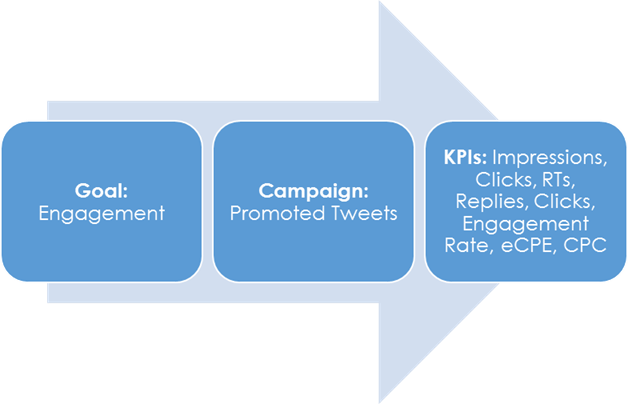Audience by Igorza76
Welcome to the third and final instalment of my riveting Introduction to Twitter Advertising (think of this part as The Return of the King, but with fewer hobbits). To recap: Getting started on Twitter can be confusing, so I’ve broken down the Twitter advertising planning process into 3 simple considerations:
1. What is your objective?
2. Who is your target audience?
3. How are you going to measure your success?
Now that you (hopefully!) know how to use Twitter to achieve your goals and reach your target audience, it’s time to discuss measurement.
3. How Are You Going To Measure Your Success?
The reason we’ve saved the best for last is that it’s entirely contingent upon your objective and targeting. If you create a campaign designed to achieve follower growth, then you should NOT be measuring your success based on the number of conversions driven by Twitter. Similarly, if you create a campaign designed to encourage lead generation and you only gained 3 new followers on Twitter, it doesn’t necessarily mean your campaign was unsuccessful.
Your key performance indicators should be directly related to your goal(s), so ensure that you have proper tracking in place to measure these.
Fortunately, Twitter’ self-serve ad platform offers great real-time analytics that allow for you to measure and optimize your campaign on an ongoing basis. The ad platform allows for measurement of various engagement metrics, which can be further segmented by audience response.
Engagement Metrics:
Impressions: The number of times users are served with a Promoted Tweet/Twitter Card (not unique).
Clicks: The number of times someone clicks on your Tweet/Card.
Retweets (RTs): The number of times a Promoted Tweet/Card is shared via the Retweet button on Twitter.
Replies: The number of tweets posted in @reply to the Promoted Tweet/Card.
Follows: The number of follows gained from a Promoted Tweet/Card impression.
Unfollows: The number of unfollows that resulted from a Promoted Tweet/Card impression.
Engagement Rate: The number of engagements (follows/replies/RTs) divided by the number of impressions.
Effective Cost Per Engagement (eCPE): The actual spend divided by the number of engagements (follows/replies/RTs).
Conversions: The number of direct response objectives that resulted from a Promoted Tweet/Card (Note: can only be tracked via Twitter’s conversion pixel implemented at the conversion point).
Clicks: The number of times your Promoted Tweet/Card was clicked (not necessarily on the URL).
Spend: The actual spend from the campaign’s allocated budget.
Cost Per Follow (CPF): The actual spend divided by the number of new followers gained from a Promoted Tweet/Card impression.
Cost Per Click (CPC): The actual spend divided by the number of clicks gained from a Promoted Tweet/Card impression.
Audience Metrics
Twitter’s ad platform also offers a summary of the above engagement metrics, broken down by your targeting criteria. For example, if you’ve chosen Follower Targeting, you can analyze which audiences (based on targeted Twitter handles) are responding best to your campaign.
Measuring all of the above metrics can help you gain valuable insight into your Twitter audience and/or campaign, but below are a few examples of the metrics that should be considered as actual KPIs for certain types of campaigns.
At long last, you now know what can be achieved on Twitter, and hopefully, how to achieve it. With a realistic idea of who you can reach (and how) using the self-serve Twitter ad platform, the opportunities for building and executing creative campaigns are nearly endless.
Remember: regardless of your clear objective, your intricate targeting scheme or your thorough measurement, the success of any Twitter campaign will be directly related to the fact that the platform is social – so your objective, audience and measurement should fit under that umbrella, too.
Post from: Search Engine People SEO Blog
How To Do Twitter Advertising – Part 3/3: Measure
—
Written by Victoria Hoffman,
The post How To Do Twitter Advertising – Part 3/3: Measure appeared first on Search Engine People Blog.
(441)













